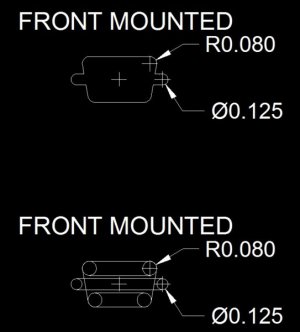I have a "one-off" job whereby I need to drill a lot of holes, including some large ones at nearly 2in diameter for MS type military style bayonet connectors, and mill some DB-9 connector openings in a 23in x 23in x 1/8in thick aluminum front panel for a big hoffman nema type box.
I have a Bridgeport with a DRO and 12in Y-travel (minus 1in for DRO scale), and my dovetail ram has nearly full travel. But it seems it would be a very clumsy job with such a large panel.
At the very least, I think I'd have to fabricate some sort of platform to support the panel that is significantly large than the width of my bed. And even with my dovetail ram I'd have to "flip" the work at least once to be able to reach everything.
The large holes are kinda problematic too. Hole saws make jagged holes, and 2inchers might be asking a lot of my old Bridgeport. I suppose I could use my boring head, but that will be tedious.
Any pearls of wisdom, or should I just find a shop that can bang it out with one setup?
I have a Bridgeport with a DRO and 12in Y-travel (minus 1in for DRO scale), and my dovetail ram has nearly full travel. But it seems it would be a very clumsy job with such a large panel.
At the very least, I think I'd have to fabricate some sort of platform to support the panel that is significantly large than the width of my bed. And even with my dovetail ram I'd have to "flip" the work at least once to be able to reach everything.
The large holes are kinda problematic too. Hole saws make jagged holes, and 2inchers might be asking a lot of my old Bridgeport. I suppose I could use my boring head, but that will be tedious.
Any pearls of wisdom, or should I just find a shop that can bang it out with one setup?


